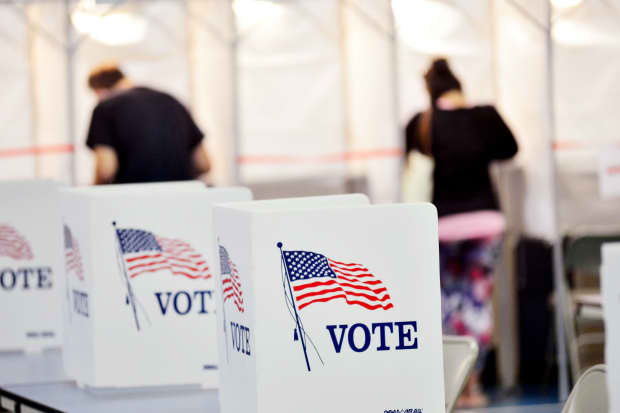This post was originally published on this site

AP
“ ‘I don’t see it in the near-term being the disaster that a lot of people are proffering in terms of having a Democratic administration.’ ”
That’s Scott Minerd, who oversees some $270 billion in assets as the chief investment officer at Guggenheim Partners, sharing his thoughts on the upcoming presidential election with at the Milken Institute 2020 Global Conference on Tuesday morning.
Minerd, in comments cited by Business Insider, said that a Democratic sweep would lead to “lots of stimulus,” which would be the best-case scenario for a market, at least over the short run.
Trump, needless to say, doesn’t see it that way:
As perhaps a sign of what’s to come, Minerd pointed out that the kinds of stocks poised to benefit most from a Biden administration — alternative energy companies, for instance — are rallying harder at the moment than stocks that would likely benefit most under Trump.
The Invesco Cleantech ETF PZD, -0.15% and the iShares Global Clean Energy ETF ICLN, +0.04%, as just a couple examples, have been on fire of late.
But historic data tells another story. While the polls show Biden with a pretty big lead heading in to the home stretch, the stock market may actually be signaling a different outcome, according to nearly a century’s worth of election-year data.
“A rising stock market tends to be a ratification of the present policies being satisfying to the investing public,” Julian Emanuel, chief equity and derivative strategist at BTIG, recently explained.
Since 1928, whenever the S&P has risen in the three months prior to an election, the party that controlled the White House won 90% of the time. The numbers, by this measure, clearly favor Trump. Drilling into the data shows there have been six presidential years since 1928 when the S&P 500 fell in the three months before election day. All six times, the party in the White House lost.
At last check, the S&P SPX, -0.36% was drifting lower Tuesday. Still, it’s holding above 3,500, firmly higher than where it was three months prior to Election Day, when it was at 3,271.

